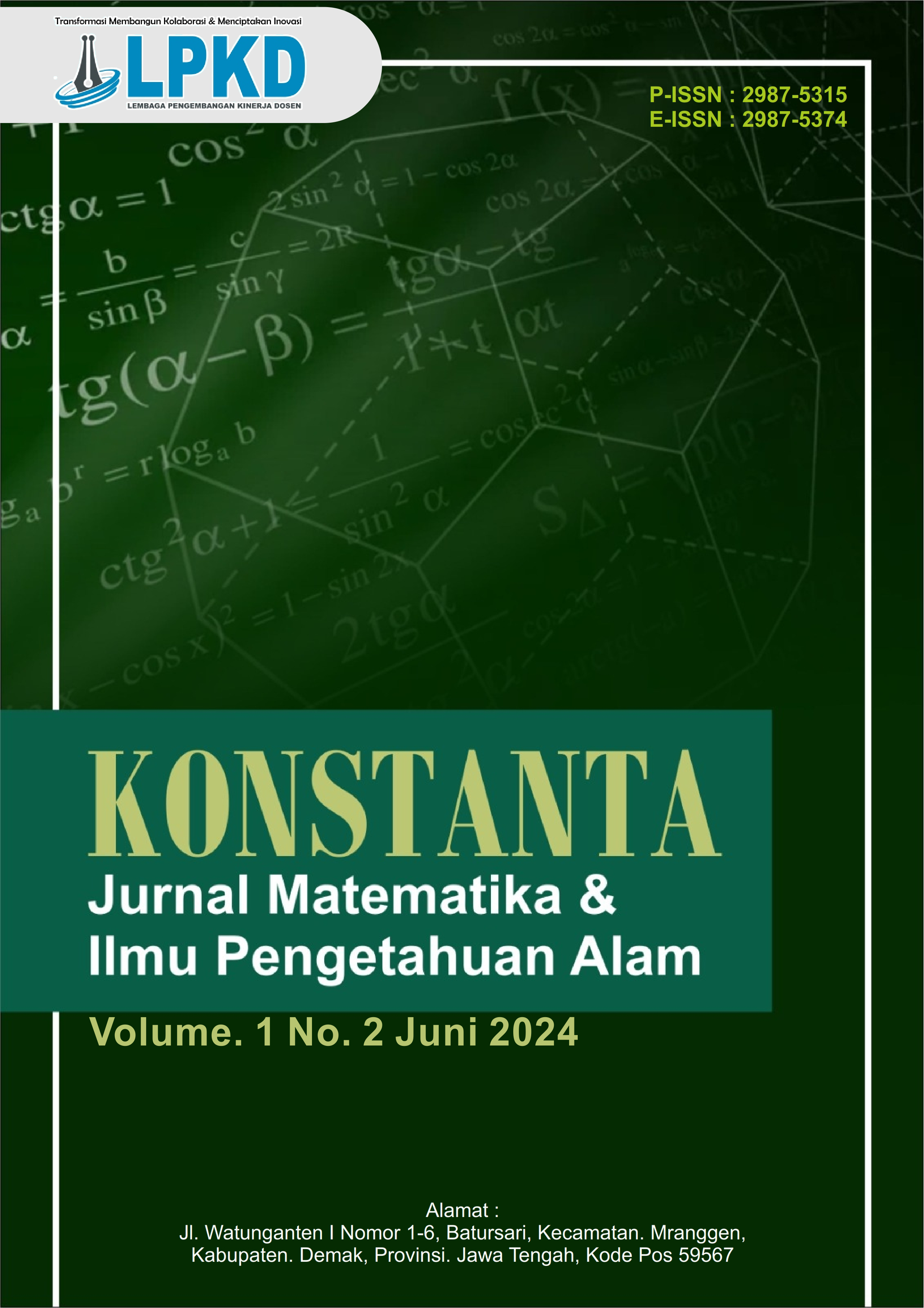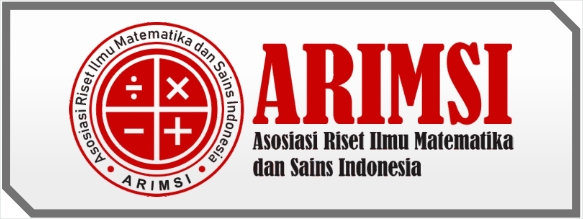Kemampuan Siswa SMP Dalam Menyelesaikan Masalah Open-Ended Berdasarkan Aspek Fluency, Flexibility, Dan Novelty
DOI:
https://doi.org/10.59581/konstanta-widyakarya.v1i1.83Keywords:
open-ended problem, fluency, flexibility, novelty, mathematicsAbstract
This study aims to describe students' ability to solve open-ended problems based on aspects of fluency, flexibility, and novelty. This type of research is qualitative. The subject taking technique in this study was purposive. The instruments that the researchers used were open-ended tests and interview guides. The research subjects were 3 students of SMP Negeri 2 Puring class VIII for the 2021/2022 academic year who had high abilities. The data collection technique used is in the form of test sheets in the form of circle questions, field notes, interviews, and documentation. The data analysis technique used is the analytical technique from Miles & Huberman which includes three activities, namely data reduction, data presentation, and drawing conclusions. The results of this study indicate that students with high abilities have a level of creative thinking 3 (creative). Students with high abilities in solving circle problems can fulfill two of the three indicators that the researcher used. The indicators are fluency and flexibility. Fluency indicators are shown by students being able to answer questions fluently and correctly. The indicator of flexibility (flexibility) is shown by students being able to answer questions with more than one way of solving.
References
Arikunto, S. 2013. Prosedur Penelitian Suatu Pendekatan Praktik. Jakarta: PT. Rineka Cipta.
Becker, P. Jerry & Epstein, Judith. 2006. The “Open Approach” to Teaching School Mathematics. Journal of the Korea Soeciety of Mathematical Education Series D: Research in Mathematical Education, Vol.. 10, No. 3, hal 151-167.
Firdaus, As’ari, A. R., & Qohar, A. 2016. Meningkatkan Kemampuan Berpikir Kreatif Matematis Siswa SMA Melalui Pembelajaran Open-Ended Pada Materi SPLDV. Jurnal Pendidikan, Vol. 1, No. 2, hal 227-236.
King, L. A. 2016. Psikologi Umum: Sebuah Pandangan Apresiatif. Jakarta: Salemba Humanika.
Lee, K. S., Hwang, D. J. & Seo, J. J. 2003. A Development of the Test for Mathematical Creative Problem Solving Ability. Journal of the Korea Society of Mathematical Education Series D: Research in Mathematical Education, Vol. 7, No. 3, hal 163-189.
Mrayyan, S. (2016). Investigating Mathematics Teacher’s Role to Improve Students Creative Thinking. American Jornal of Educational Research, Vol. 4, No. 1, hal 82-90.
Munandar, U. 2009. Pengembangan Kreativitas Anak Berbakat. Jakarta: Rineka Cipta.
Putri, R. I. & Santoso, R. H. 2015. Keefektifan Strategi React Ditinjau dari Prestasi Belajar, Kemampuan Penyelesaian Masalah, Koneksi Matematis, Self Efficacy. Jurnal Riset Pendidikan Matematika. Vol. 2, No. 2, hal 262-272.
Satori, D. & Komariah, A. 2017. Metodologi Penelitian Kualitatif. Bandung: Alfabeta.
Siswono, T. Y. E. 2015. Desain Tugas untuk Mengidentifikasi Kemampuan Berpikir Kreatif Siswa dalam Matematika. Unesa University Press, Surabaya.
Sitinjak, D. 2014. Optimalisasi Kemampuan Berpikir Kreatif Siswa dengan Penerapan Strategi Pemecahan Masalah Open-Ended pada siswa Sekolah Dasar. Jurnal Saintec, Vol. 6, No. 4, hal 23-29.
Suratmi & Purnami, A. S. 2017. Pengaruh Strategi Metakognitif Terhadap Kemampuan Pemecahan Masalah Matematika Dtitinju dari Presepsi Siswa TerhadapPelajaran Matematika. Union: Jurnal Pendidikan Matematika. Vol. 5, No. 2, hal 183-194.
Tohir, Mohammad. 2019. Hasil PISA Indonesia Tahun 2018 Turun Dibanding Tahun 2015. Tersedia online: https://matematohir.wordpress.com/2019/12/03hasil-pisa-indonesia-tahun-2018-turun-dibanding-tahun-2015/ (03 Desember 2019).
Utami, W. N., St. B. Waluyo, Mashuri. 2014. Keefektifan Model Pembelajaran Problem Sloving Berbasis Galery Walk Terhadap Kemampuan Pemecahan Masalah. Unnes Journal Of Mathematics Education. Vol. 3, No.2, hal 81-86
Wardhani, S., Ichsan, M. & Widyantini, T. 2010. Pembelajaran Kemampuan Pemecahan Masalah Matematika di SD. Yogyakarta: PPPTK Matematika.
Wijaya, A. 2012. Pendidikan Matematika Realistik: Suatu Alternatif Pendekatan Pembelajaran Matematika. Yogyakarta: Graha Ilmu.













